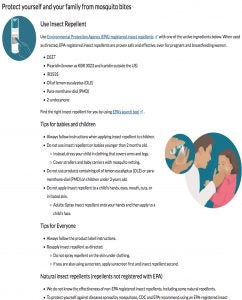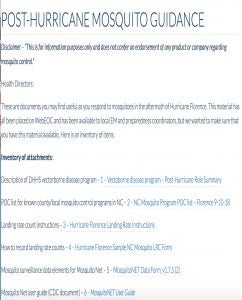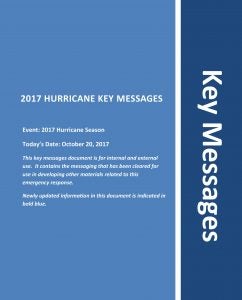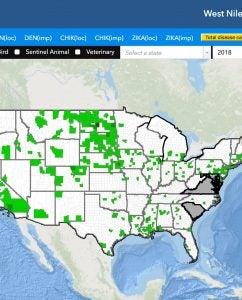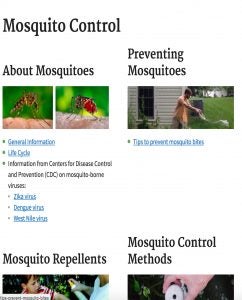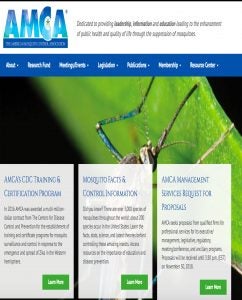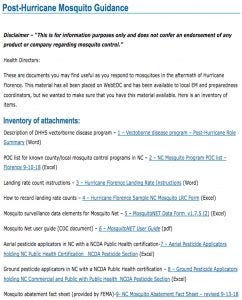Mosquitoes
Hurricane season in the United States is from June 1 to Nov. 30. Mosquito control programs and other county, municipality and state entities involved with disaster preparedness should have plans in place well before mosquito season in order to be prepared for potential emergency mosquito control after a natural disaster, such as a hurricane. The public should routinely be informed of ways to protect themselves from mosquito bites in advance of an epidemic or disaster. Communication between public health agencies, private companies, university partners, community groups and the public is essential to ensure an effective response.
Although the hurricane event itself likely kills large amounts of mosquitoes, standing water left behind inundates existing flood water mosquito eggs, stimulating hatching and provides multiple sources for additional egg laying by other species. Seven to 10 days (depending on environmental conditions) after a hurricane or other significant rain event, the first round of mosquitoes is expected to hatch, and newly emerged females will seek blood-feeding hosts and lay more eggs. This process will continue and mosquito populations will multiply unless control measures are implemented.
Disaster recovery efforts by emergency workers can be impeded by large numbers of host-seeking mosquitoes. Power outages are common after hurricanes, and without air conditioning, hot outdoor temperatures may encourage the public to open windows, thereby increasing the chance of mosquitoes entering homes and biting people if no window screens are used. This can increase the chance of exposure to mosquito-borne diseases and secondary infections that may occur as a result of mosquito bites. In order to protect workers and public health, it may be necessary to conduct widespread mosquito control to provide temporary suppression of mosquito populations.
East Carolina University has accumulated the following resources for dealing with mosquitoes after natural disasters.
